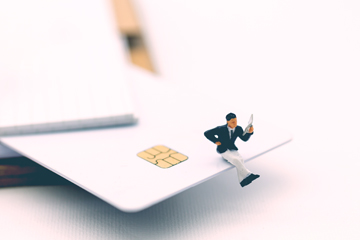Fueled by the pandemic’s unique challenges, the Buy Now Pay Later trend is here to stay. And everyone from large banks to tech giants to fintechs are eager to grab a share of the pie. The latest entrant in this emerging field is Apple Inc.1 It is all set to launch a “Buy Now Pay Later” (BNPL) service in association with the Goldman Sachs Group. Under the Apple Pay Later service, consumers using Apple Pay will be able to pay for any purchase in instalments over a specified period of time. This will incentivize wider adoption of Apple Pay as consumers get the freedom to buy items, they would normally not be able to afford. This niche and emerging service is estimated to be about USD 22 trillion globally.2 And as it begins to attract both customers and providers, it is important to understand how it works, the myriad factors fueling its adoption, and its potential for growth.
BNPL vs Credit Cards
The concept of deferred payments is not new. The credit card industry is built on the premise of delayed payments for purchases. Why then, is there now a move to yet another model for delayed payments? The significant difference between BNPL services and credit cards lies in the simplicity of the former. Unlike a credit card, there are virtually no interest fees to be paid on BNPL services and these can be availed of immediately. Customers can also defer payments well beyond the monthly credit card cycles. 45 percent of digital shoppers in 2018 said that the kind of payment options available was important in their buying decision and this fact is borne out further by the increased adoption of BNPL models.3 Additionally, there are no application processes or background verifications for these services. Users can start using the scheme immediately at the Point of Sale. This gives customers more freedom and flexibility to manage their finances better and buy items that they would normally not be able to afford.
The BNPL Customer
Despite the high interest rates and long approval processes, the credit card industry has thrived for decades. What changed now? The most significant change has been the emergence of a new kind of financial services customer. As more Gen X and millennials make their way into the formal banking economy, they increase the demand for easy, seamless and on demand services. They are also digitally savvy and comfortable with not only shopping online but using a variety of digital payment options and digital financial services. A number of these customers may also have bad or inadequate credit histories, making it difficult for them to get credit cards. Buy Now Pay Later empowers them to buy what they need without the fear of high interest rates, because these schemes usually only impose late fees in case of payment defaults. Not surprisingly usage of BNPL schemes was highest in the 18- 24 years age group, registering a 62 percent growth between June 2020 and March 2021.4 But this is not to say that older generations are not using these services. In fact, studies noted a 98 percent increase in usage of BNPL amongst the 55+ age group between June 2020 and March 2021, and 53 percent of customers who had never used these services earlier stated that they were inclined to try them out within the next year.
Accelerating Adoption
Over the last year, more customers have been trying out BNPL options. 55. 8 percent consumers have tried BNPL in 2021, which is an almost 50 percent increase from the 37. 65 percent who had used it in July 2020. The COVID 19 pandemic has undoubtedly had a role to play in this. Over the last year and half, work and life has been severely disrupted. As banks closed branches to protect employees and customers, and lockdowns forced people indoors, adoption of digital payments accelerated. The economic slowdown caused by the pandemic led to reduced incomes and increased financial caution. BNPL offers such customers the flexibility to buy items when they need it without having to wait for credit card approvals or paying hefty interests. 41 percent of customers who started using BNPL in the last year, said they did so to save cash for emergencies while 25 percent attributed it to reduced income.5 Regardless of the future course of the pandemic, it is now certain that customer financial habits have changed forever. From increased adoption of digital payments to increased appetite for new financial services, the banking customer is not likely to revert to their earlier banking habits. And as such, the demand and acceptance of BNPL is only likely to increase over the next few years.
The BNPL space is rapidly evolving with not just fintechs but technology giants also entering the fray. It is a service that naturally lends itself to collaboration, financial services platforms and ecosystems and we are likely to witness some interesting developments within the space. There is also ample room for innovative partnerships and developments based on customer feedback. For example, Afterpay’s association with Westpac for banking as a service was born out of customer feedback – why not do more with their slogan “How do I Afterpay my life?” Clearly it was a top customer concern that was easily solved with the right partner onboard. This is an evolving space with room for great innovation and financial institutions must monitor developments closely to secure their slice of the BNPL slice in the future.
